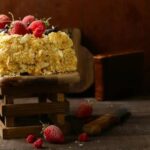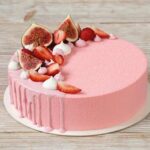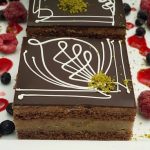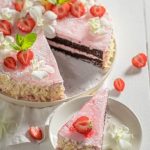Are you eager to learn how to practice cake decorating and improve your skills in creating stunning and delicious cakes? Cake decorating is not only a creative and fulfilling art form, but it also plays a crucial role in making any cake visually appealing.
In this article, we will explore the essential tools needed for cake decorating, the fundamental techniques and skills required, different cake decorating styles, step-by-step practice exercises, troubleshooting common issues, setting a practice schedule, and additional resources for further learning.
Understanding the basics of cake decorating is an important step in mastering this art. It’s crucial to have a good grasp of the fundamental techniques and skills required for cake decorating, such as properly leveling and crumb coating a cake before applying any decorations. Additionally, having the right tools is essential for practicing cake decorating effectively. We will also discuss where to buy these tools and how to properly care for them to ensure longevity and effectiveness.
In the subsequent sections, we will delve into mock cakes or practice tools that can be used to improve your skills in cake decorating. Moreover, we will provide detailed instructions on various practice exercises including piping, icing smoothing, creating borders, troubleshooting common issues during practice sessions, setting realistic goals, and tracking your progress over time. So stay tuned as we guide you through everything you need to know about practicing cake decorating.
Essential Tools for Cake Decorating Practice
List of Essential Tools
When it comes to practicing cake decorating, having the right tools is essential. Some of the must-have tools for cake decorating practice include piping bags and tips, offset spatula, cake turntable, and a bench scraper. These tools are necessary for perfecting various decorating techniques such as piping, spreading icing smoothly, and creating clean edges on cakes.
Where to Buy and How to Care for Tools
These essential cake decorating tools can be found at specialty baking stores, craft stores, or online retailers. It’s important to invest in high-quality tools that will last long and make practicing more efficient. Properly caring for these tools by cleaning them after each use and storing them in a dry place will extend their lifespan and ensure they remain in good condition for continuous practice.
Additional Helpful Tools
In addition to the basic tools mentioned above, other helpful items for cake decorating practice include a rotating cake stand, modeling tools for shaping fondant or gum paste decorations, and a leveler for ensuring even cake layers. As you progress in your practice, you may also consider investing in airbrush kits, edible luster dusts, and other advanced decorating tools to expand your skills.
Understanding the Basics of Cake Decorating
Cake decorating is a wonderful skill that allows individuals to express their creativity and artistry through beautiful and delicious confections. However, before diving into the more advanced techniques and styles of cake decorating, it’s crucial to first understand the basics. Understanding the fundamental techniques and skills required for cake decorating is essential for building a strong foundation on which to improve and expand your abilities.
One of the most important basic skills in cake decorating is learning how to properly level and crumb coat a cake before decorating. Leveling a cake ensures that it has an even surface, which is essential for a professional-looking finished product. Crumb coating involves applying a thin layer of frosting to seal in any loose crumbs, providing a smooth base for further decoration.
To start practicing these fundamental techniques, you will need some essential tools. These include an offset spatula for spreading frosting, a turntable for easily rotating the cake while decorating, and a bench scraper for achieving smooth surfaces on the icing. Learning how to use these tools effectively is crucial for mastering the basics of cake decorating.
In addition to tools, it’s also important to familiarize yourself with different types of frosting and icing. Some popular options include buttercream, fondant, royal icing, and ganache. Each type has its own unique properties and uses in cake decorating. Understanding how to work with different types of frosting will provide you with a strong foundation for creating diverse designs and decorations on your cakes.
| Basic Cake Decorating Tools | Description |
|---|---|
| Offset Spatula | An angled spatula used for spreading frosting or smoothing surfaces on cakes. |
| Turntable | A revolving platform that allows for easy access to all sides of the cake while decorating. |
| Bench Scraper | A tool with a straight edge used for creating sharp edges or smoothing out frosting on cakes. |
Learning Different Cake Decorating Styles
Overview of Various Cake Decorating Styles
When it comes to cake decorating, there are several different styles and techniques to consider. From classic buttercream designs to intricate fondant creations, each style offers its own set of challenges and creative opportunities. It’s important for aspiring cake decorators to familiarize themselves with the various options available before diving into practice.
Pros and Cons of Each Style
Understanding the pros and cons of each cake decorating style is crucial for beginners. While buttercream may be easier to work with for some, fondant allows for more intricate designs. It’s important to weigh these factors when deciding which style to focus on for practice. By carefully considering the advantages and drawbacks of each approach, decorators can make informed decisions about where to invest their time and effort.
Which Style to Focus on for Practice
For those just starting out in cake decorating, it may be beneficial to begin with a simpler style such as buttercream or royal icing. These styles offer a good foundation for mastering basic techniques before moving on to more complex designs with fondant. By focusing on one particular style during practice sessions, decorators can build confidence and gradually expand their skill set.
Aspiring cake decorators must understand the various styles available in order to make informed choices about how to practice cake decorating effectively. With the right knowledge and approach, they can develop their skills and create stunning cakes that delight customers and loved ones alike.
Step-by-Step Practice Exercises
Cake decorating is a skill that requires practice and patience to master. Luckily, there are several step-by-step exercises that can help you improve your cake decorating techniques. Whether you are just starting out or looking to refine your skills, these practice exercises can make a significant difference in the quality of your cake decorations.
One of the fundamental techniques in cake decorating is piping. Practicing different piping styles and designs can help you develop steady hands and precise movements. Start by practicing basic shapes like dots, lines, and swirls on a flat surface before moving on to piping directly onto a cake. Gradually challenge yourself with more intricate designs and patterns to enhance your piping skills.
Another important aspect of cake decorating is icing smoothing. To practice this technique, start with a crumb-coated cake and use an offset spatula or bench scraper to smooth the icing evenly around the sides and top of the cake. Repeat this process multiple times until you achieve a seamless and polished finish. Taking the time to perfect icing smoothing will greatly enhance the overall appearance of your decorated cakes.
Creating borders is also an essential skill in cake decorating. Practice making different borders using various piping tips to add decorative edges to your cakes. Experiment with different designs such as shells, scallops, or rosettes to expand your repertoire of border styles. Consistent practice will not only improve the neatness and precision of your borders but also boost your confidence in executing intricate designs.
By dedicating regular practice sessions to these step-by-step exercises, you can enhance your cake decorating abilities and achieve professional-looking results in no time. Remember that consistency is key when it comes to mastering any skill, so be patient with yourself as you work through these exercises on how to practice cake decorating.
Using Practice Tools and Mock Cakes
Cake decorating is an art form that requires practice, patience, and the right tools. Using practice tools and mock cakes can greatly improve your cake decorating skills. Here are some tips for how to practice cake decorating using these tools:
- Invest in a set of practice tools: Practice tools such as piping bags, tips, and icing smoothers are essential for honing your cake decorating skills. These tools allow you to perfect techniques like piping, creating borders, and smoothing icing. Look for affordable sets that include a variety of tips and accessories.
- Utilize dummy cakes: Dummy cakes, also known as styrofoam or fake cakes, are ideal for practicing cake decorating without the pressure of working on a real cake. They allow you to experiment with different designs, try out new techniques, and make mistakes without wasting ingredients. You can reuse dummy cakes multiple times, making them a cost-effective option for practice.
- Where to find practice tools: Practice tools can be found at specialty baking stores, online retailers, or even in craft stores. Look for beginner-friendly sets that include everything you need to get started with practicing cake decorating. Additionally, check if there are any local classes or workshops where you can learn how to use these tools effectively.
Using practice tools and mock cakes is an effective way to improve your cake decorating skills. By investing in the right tools and utilizing dummy cakes, you can confidently practice various techniques and styles without the fear of making mistakes on real cakes. With consistent practice and dedication, you’ll see significant improvement in your cake decorating abilities over time.
Troubleshooting Common Cake Decorating Issues
As with any skill, mastering the art of cake decorating comes with its fair share of challenges. From air bubbles in your icing to smudges on your perfectly smooth surface, it’s important to know how to troubleshoot common cake decorating issues. Here are some tips for overcoming these obstacles and improving your cake decorating skills:
1. Fixing Air Bubbles: Air bubbles can ruin the appearance of your beautifully decorated cake. To avoid this issue, make sure to properly smooth out your icing as you apply it. If you do end up with air bubbles, gently poke them with a toothpick or needle and then smooth out the area again.
2. Smoothing Out Imperfections: Sometimes, despite your best efforts, you may end up with a few imperfections on your cake’s surface. To fix this, use a Viva paper towel or a bench scraper to gently smooth out any smudges or blemishes on the icing.
3. Preventing Color Bleeding: When using different colored icings or decorations on your cake, it’s important to prevent color bleeding. To avoid this issue, make sure that each color is completely dry before adding another one on top of it.
By understanding how to troubleshoot these common cake decorating issues and effectively addressing them in practice sessions, you’ll be well on your way to honing your skills and creating stunning cakes for any occasion.
Practice Schedule and Goal Setting
Cake decorating, just like any other skill, requires consistent practice in order to improve and master. Setting a practice schedule and goals can help aspiring cake decorators stay on track and continue to develop their skills.
To begin, it’s important to allocate specific times during the week dedicated to practicing cake decorating. Whether it’s a few hours every weekend or a daily practice session, having a set schedule ensures that time is devoted to honing the craft. Additionally, setting specific goals such as mastering a new piping technique or completing a practice cake without any smudges can provide focus and motivation.
One effective way of keeping track of progress and improvement is by documenting each practice session. Taking photos of completed practice cakes or noting down the areas that need improvement can help in identifying strengths and weaknesses. This documentation also serves as a visual record of progress over time, which can be encouraging during moments of frustration.
Lastly, it’s important for aspiring cake decorators to be patient with themselves and understand that skill development takes time. Celebrating small victories along the way and seeking feedback from experienced decorators can provide valuable insight for improvement. With dedication, perseverance, and a well-structured practice schedule, anyone can improve their cake decorating skills.
| Practice Schedule | Goal Setting |
|---|---|
| Allocate specific times for practicing cake decorating. | Set specific goals such as mastering new techniques or completing practice cakes without mistakes. |
| Document progress through photos or notes. | Celebrate small victories and seek feedback from experienced decorators. |
Conclusion and Next Steps
Practicing cake decorating is an essential step in honing your skills and creating beautiful, professional-looking cakes. As mentioned in the previous sections, mastering the techniques and understanding the basics are crucial for success in cake decorating. However, it all comes down to consistent practice to truly improve and perfect your craft. Here are some tips on how to practice cake decorating effectively.
Firstly, it’s important to set a regular practice schedule. Whether it’s dedicating a few hours every weekend or practicing for a short time each day, having a consistent schedule will help you stay committed to improving your cake decorating skills. Setting realistic goals for each practice session can also keep you motivated and focused on specific techniques that need improvement.
Additionally, tracking your progress is essential when practicing cake decorating. Keep a journal or create a checklist of the techniques you want to work on, and note down any improvements or breakthroughs during your practice sessions. Seeing tangible progress can boost your confidence and motivate you to continue honing your skills.
Finally, don’t be afraid to seek out additional resources and support for your cake decorating practice. There are plenty of books, websites, and online courses dedicated to cake decorating that can provide valuable tips, inspiration, and guidance. By immersing yourself in the world of cake decorating through these resources, you can continue learning new techniques and refining your skills. Remember, consistent practice combined with passion is the key to becoming an expert in cake decorating.
Additional Resources and Links
In conclusion, mastering the art of cake decorating takes time, dedication, and most importantly, practice. From understanding the basics to learning different styles and techniques, it’s crucial to consistently work on honing your skills. The tools and resources outlined in this article provide a solid foundation for anyone looking to improve their cake decorating abilities.
By investing in the essential tools needed for cake decorating practice, such as piping bags, tips, spatulas, and turntables, you can set yourself up for success. Knowing where to buy these tools and how to care for them will ensure they last a long time and continue to support your practice sessions.
As you continue on your cake decorating journey, don’t forget the importance of setting realistic goals and creating a practice schedule that works for you. By dedicating regular time to practicing different techniques and styles, you’ll begin to see improvements in your abilities. Remember, consistent practice is key to perfecting your craft.
For those eager to further their knowledge and skills in cake decorating, there are plenty of additional resources and links available. Whether it’s through books, websites, or online courses, immerse yourself in the many learning opportunities out there.
And don’t hesitate to seek out tutorials and videos that offer step-by-step guidance on how best to practice cake decorating. With determination and a willingness to learn, you’ll be well on your way to becoming a skilled cake decorator.
Frequently Asked Questions
What Can I Use to Practice Cake Decorating?
You can use various items to practice cake decorating, such as dummy cakes, foam blocks, or even cardboard cutouts shaped like cakes. These alternatives allow you to practice different techniques without wasting real cake.
How Can I Practice Cake Decorating Without Wasting Cake?
To practice cake decorating without wasting actual cake, you can use icing sheets, dummy cakes, or even Styrofoam blocks to simulate the texture of a real cake. This way, you can hone your skills without the guilt of throwing away food.
How Can I Improve My Cake Decorating Skills?
Improving your cake decorating skills involves practicing piping techniques, experimenting with different types of frosting, and learning about color theory for creating appealing designs. Additionally, watching tutorials and seeking feedback from experienced decorators can help improve your skills over time.

Welcome to my blog about home and family. This blog is a place where I will share my thoughts, ideas, and experiences related to these important topics. I am a stay-at-home mom with two young children. I hope you enjoy reading it! and may find some helpful tips and ideas that will make your home and family life even better!





